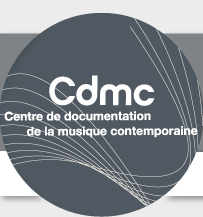Electroacoustic Music Studies Network Conference 2019 - Call for proposals
The expansion of electroacoustic music in the Americas: local influences, cultural impact and global interactions
Casa del Lago UNAM, Mexico City, June 11 – 15 2019
Electroacoustic music was initiated at the end of the forties and the beginning of the fifties. The concept of composing music with sound producing and recording devices quickly expanded to different countries and regions of the world. Since the beginning of the fifties, North America started what was called “tape music”, then works started appearing in the rest of the Americas and small studios and experiences began in many countries using different terminologies, such as phonology studios, laboratories, or experimental centres; some were linked to universities while others bloomed from private initiatives.
In the early history of electroacoustic music, Latin speaking American countries provided a fertile ground for development; yet, either through the challenge of offering a state-of-the-art technical provision or driven by political or due to economic factors, there has since been a large exodus of Latin American musicians and composers to all regions of the world.
Before computing technology became widely available, it was financially challenging for Latin American individuals or institutions to gather the different pieces of technology necessary for making music. Imaginative approaches were undertaken; technology was developed with limited means and many composers started travelling to other countries to find indispensable tools for their musical ideas.
The history and different adventures in the beginnings of electroacoustic music in Latin America is one of the foci the EMS 2019 conference.
Besides these origins, it seems important to explore the influences and impact of the work of composers from Latin Americas in electroacoustic music.
Female composers have been influential and are extremely active today in terms of electroacoustic musical creation; their concepts and ideas and relations to their countries deserve to be explored.
Finally, perhaps the most challenging aspect regarding Latin American electroacoustic music is to understand how local influences often derived from native musical practice, and have played a significant role. Similarly, it is important to investigate whether there is something as a “Latin American Sound” which could began to be identified and explored geographically.
EMS 2019 proposes profound studies regarding a large region, one which has had a strong impact on electroacoustic music. The conference will accept papers in English and in Spanish, as special Spanish-speaking sessions will be organised. We are looking forward to your participation in the exciting EMS 2019 in Mexico City. The conference is organised in collaboration with the Casa del Lago UNAM.
The conference is also open to other topics relevant to the history and/or contemporary practice of electroacoustic music. We encourage the submission of papers relating to any aspect of the field, including but not limited to analysis, perception, listening, terminology, composition, performance, cultural issues and education.








